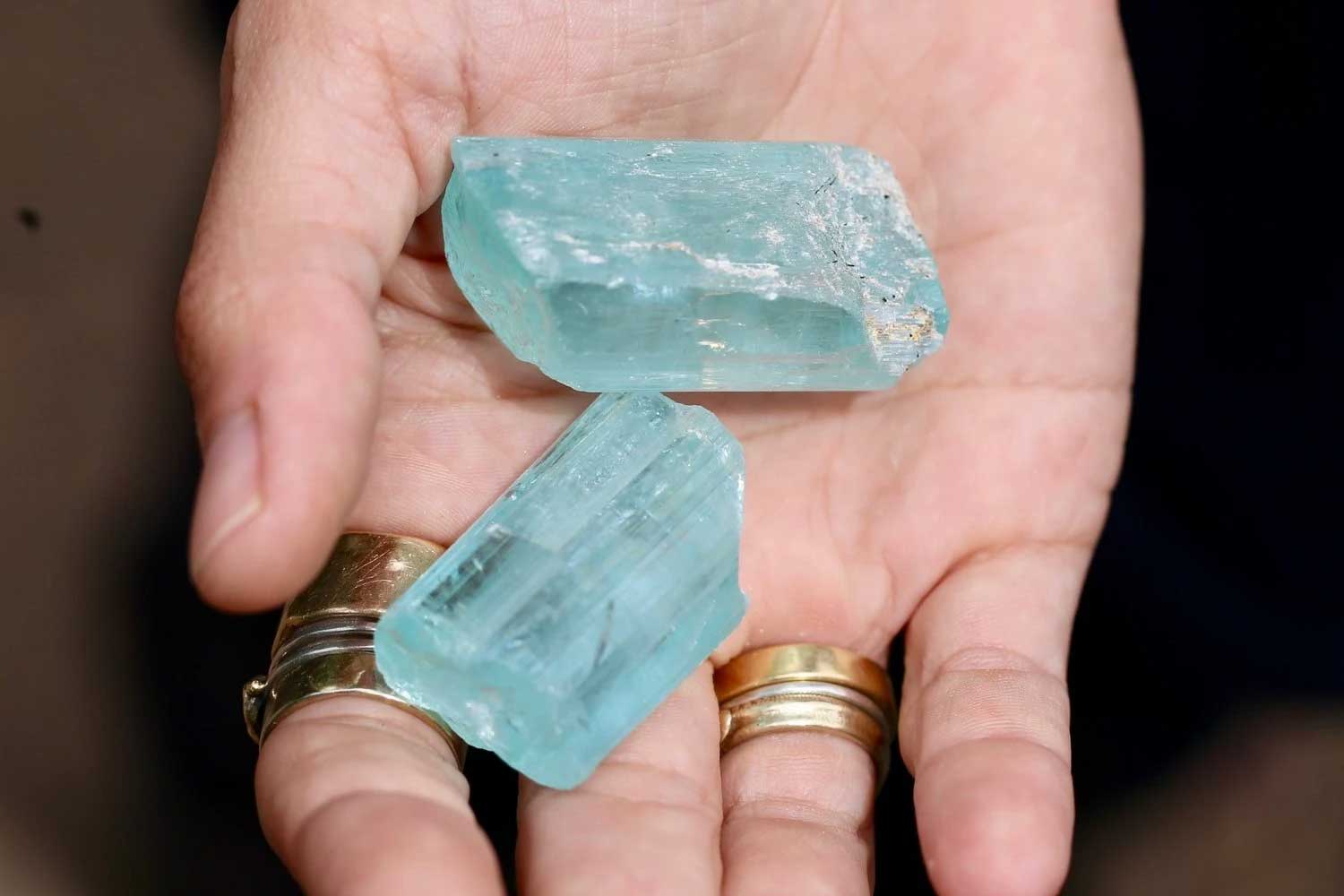
Aquamarine History & Mythology: Mermaid's Treasure Loved By Sailors
Aquamarine is a beautiful gemstone named for its blue-green color, evoking imagery of nautical paradise or a clear, tranquil sea. Aquamarine is a type of beryl gemstone, with deposits located in various countries around the world, including the United States of America, Brazil, Colombia, Zambia, Madagascar, Malawi, Tanzania and Kenya.
Aquamarine is derived from the Latin ‘Aqua’ and ‘Marina’ meaning ‘Water’ and the ‘Of the sea’.

The Sailor's Stone
To the Ancient Romans, this gemstone was heavily associated with sea-faring and sailing. The famous historian Pliny the Elder was the first to record the existence of aquamarine, saying “The lovely aquamarine, which seems to have come from some mermaid’s treasure house. In the depths of a summer sea, has charms not to be denied”.
The Ancient Greek ideas were almost identical, with Aquamarine being associated with Poseidon (god of the sea) and with Neptune for the Romans. Both cultures believed that aquamarine would provide protection for sailors, which is why the Romans nicknamed it “The Sailor’s Stone”. The Greek mythologies also link aquamarine to the Sirens, famous for seducing sailors and luring them to a watery grave.

The Growth Of Aquamarine In Other Cultures
As Rome’s influence expanded throughout the Mediterranean and beyond, other cultures began to use and respect aquamarine. The Egyptians also equated aquamarine with the sea and sea-faring, and the Hebrews used aquamarine as one of the stones which adorned the breastplate of the High-Priests. In Buddhist tradition, aquamarine became associated with love, as well as the ocean. The custom of gifting aquamarine jewelry as wedding gifts grew in India, where a lot of aquamarine was mined in ancient times.
During the Middle Ages in Europe, aquamarine’s reputation was one of purity and detoxification. It was believed that aquamarine would purify liquid it was placed into, and so it became especially sought after by the Kings and Queens of the day, who were often at risk of being poisoned by a jealous adversary or political rival.

A Gemstone Favored By Royalty
Aquamarine wasn’t just the gemstone for sailors and fishermen, it is also featured in two Royal Crowns in Europe, the Hungarian Crown Jewels (Crown of St Stephen) and the Bohemian (Czech) Crown Jewels, the Crown of St Wenceslas.
According to legend, the Crown of St Wenceslas cannot be worn by a usurper, only the rightful ruler. It is believed that the infamous SS officer Reinhard Heydrich once crowned himself, during his time as Protector of Bohemia and Moravia in the height of the second world war. Triggering the curse, Heydrich was then assassinated by the Czech Resistance less than a year later.
Queen Elizabeth II of the United Kingdom was gifted diamond and aquamarine pieces as a coronation gift from the president of Brazil in 1953.

Unique Properties Of Aquamarine
Aquamarine feels ’cool’ to the touch and perhaps because of that, in traditional medicines, aquamarine is said to soothe ailments such as fevers and allergies. Real aquamarine is also a very hard stone, registering around 8 on the Mohs Hardness scale. In the past, aquamarine was used as a very early version of spectacles, giving the name ‘Brille’ to spectacles in the German language, from ‘Beryl’.
For a unique piece of jewelry that looks like it came straight out Pliny the Elder's mermaid treasure house, check out our made to order aquamarine jewelry here.



